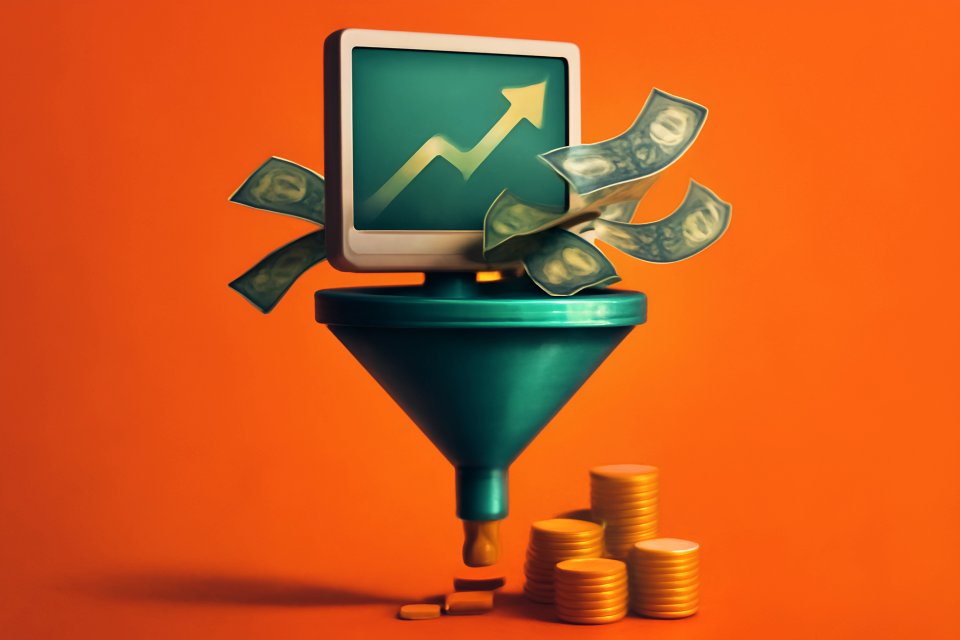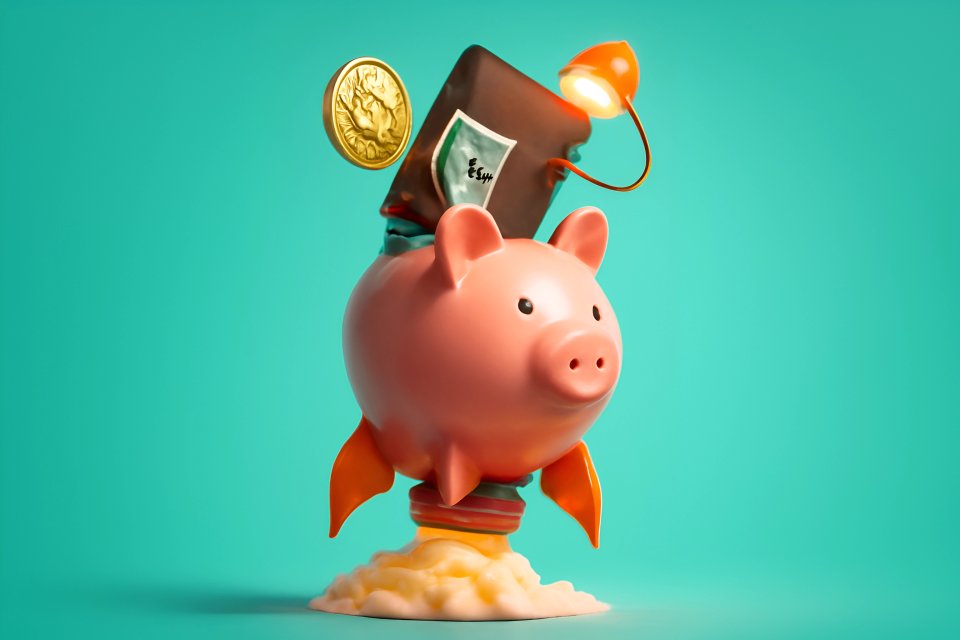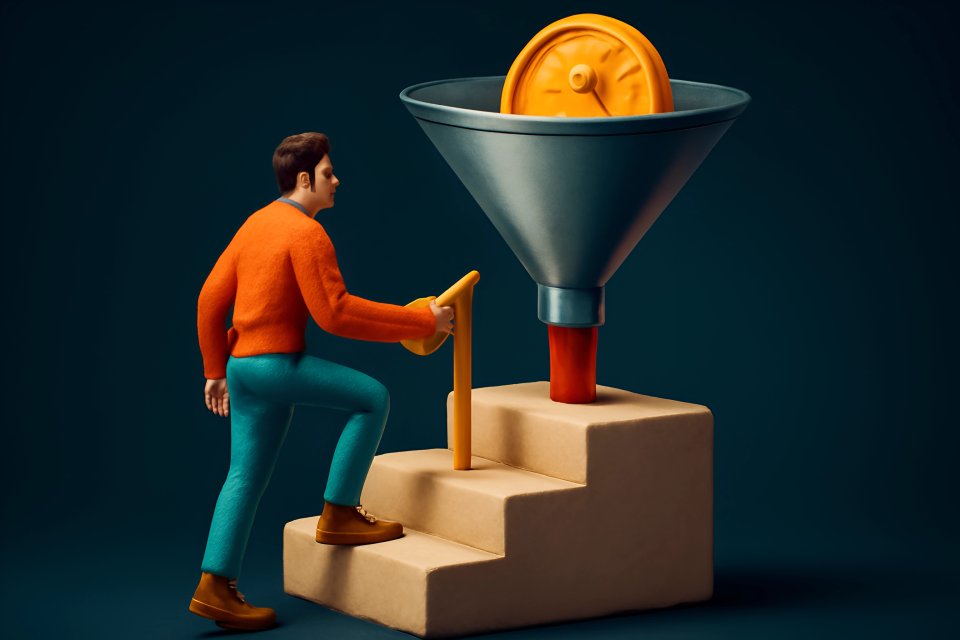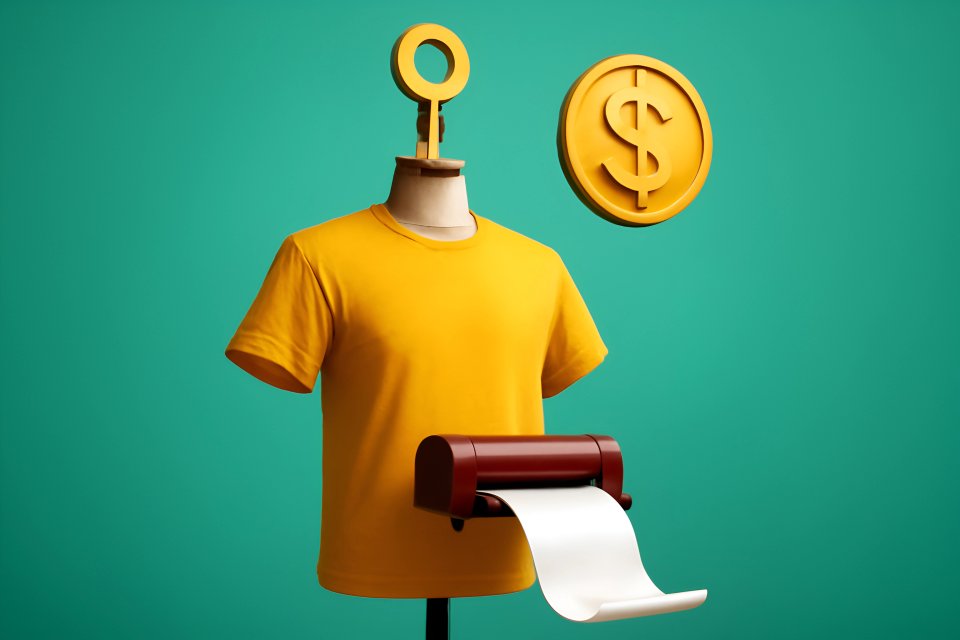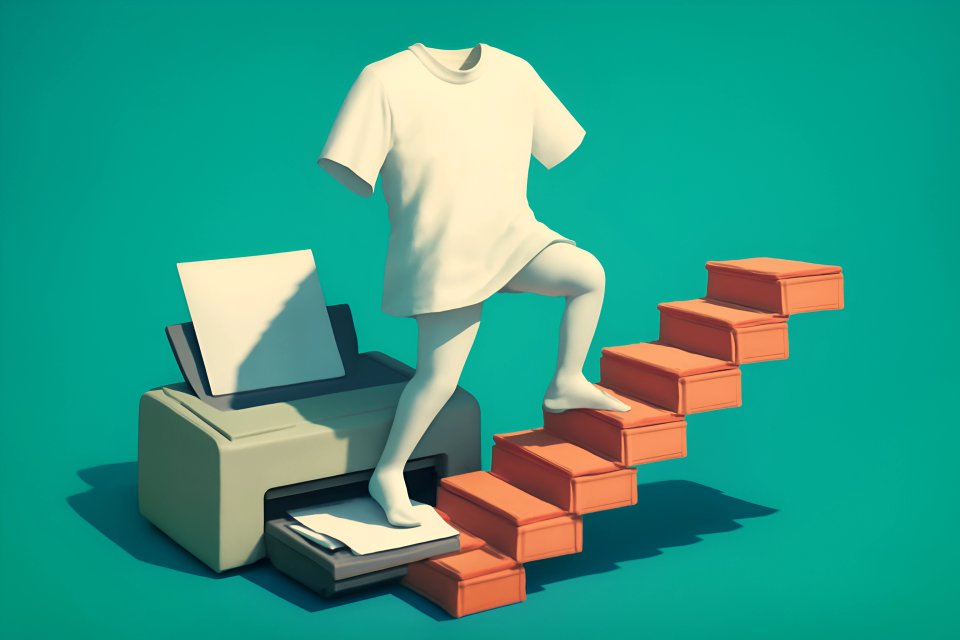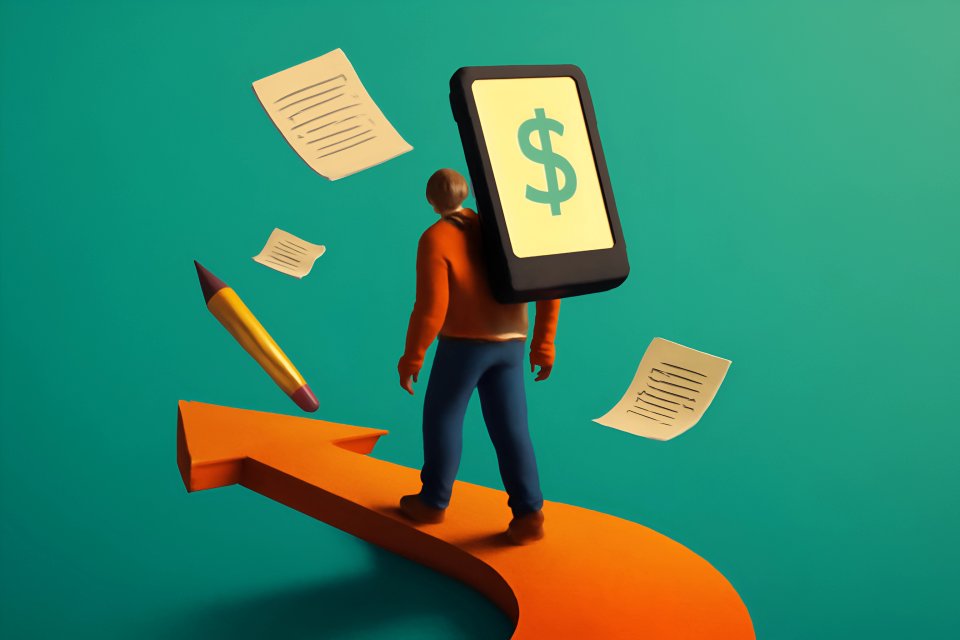
Introduction: The Quest for Smarter Income
The clock ticks. Another hour traded for a fixed wage, another day spent building someone else’s dream. You feel the pull for something more—not a fantasy of overnight riches, but the tangible, life-altering power of financial control. This is the quest for smarter income, a way to build assets that work for you, even while you sleep.
Enter the world of passive income, where your creativity and expertise become your highest-paid employees. Two titans dominate this landscape for aspiring digital entrepreneurs: Print-On-Demand (POD) and Affiliate Marketing. They represent two distinct paths to the same goal of building a profitable online venture with minimal investment, each with its own unique demands and rewards.
Forget the hype and the gurus promising instant success. This is a practical, head-to-head comparison designed to do one thing: help you decide which of these powerful models is the right fit for you. It’s not about which is better, but which is better for your skills, your resources, and your vision of freedom.
The 101 Breakdown: Understanding the Mechanics
What is Print-On-Demand (POD)?
Imagine being the creative director of a global merchandise brand without ever touching a t-shirt or a roll of packing tape. That’s the magic of Print-On-Demand. You create the designs, upload them to a product, and a third-party partner handles everything else—the printing, the packaging, and the shipping—only after a customer places an order.
This model completely eliminates inventory risk, a major hurdle for traditional e-commerce. According to Shopify's guide on how to start a print-on-demand business, this low-risk entry point is one of its biggest draws. Your primary job is to create compelling designs and build a brand that people want to wear and share.
You are the artist, the visionary. The logistics are automated, freeing you to focus on what you do best: creating. This is how you can unlock recurring revenue with print-on-demand by building a catalog of designs that sell on autopilot.
What is Affiliate Marketing?
Now, picture yourself as a trusted curator, a go-to expert in a field you’re passionate about. You’re the friend everyone asks for recommendations before they buy something. Affiliate marketing formalizes that role and pays you for your influence.
In this model, you earn a commission by promoting another company's products or services. You share a unique affiliate link on your blog, YouTube channel, or social media, and when someone makes a purchase through that link, you get a piece of the profit. As digital marketing expert Neil Patel explains, success hinges on building trust and authority with your audience.
You don't create the product, handle customer service, or manage shipping. Your entire business is built on the power of your recommendation. You are a guide, connecting your audience with solutions you genuinely believe in, and getting paid for that valuable referral.
The Head-to-Head Battle: A Practical Comparison
When these two models step into the ring, they reveal different strengths and weaknesses. The right choice depends entirely on what you bring to the fight—your skills, your budget, and your long-term goals. Let's break down the critical factors.
| Feature | Print-On-Demand (POD) | Affiliate Marketing |
|---|---|---|
| Primary Skill | Visual Creativity & Design | Content Creation & SEO |
| Startup Cost | Very Low (Design Software) | Near Zero (Blog Hosting) |
| Profit Margin | Higher per item (15-50%) | Varies wildly (3-50%+) |
| Brand Control | 100% Your Brand & Products | 0% Control Over Products |
| "Passivity" Level | High (Set & Forget Designs) | High (Evergreen Content) |
Factor 1: Startup Costs & Risk
Your journey into passive income shouldn't require a second mortgage. Both POD and affiliate marketing are celebrated as some of the best low-risk digital side hustles available. With POD, your main costs are for design tools like Canva Pro or Adobe Illustrator and potentially a platform fee for a storefront like Shopify. Since you buy no inventory, the financial risk is virtually nonexistent.
Affiliate marketing takes this a step further, with startup costs that can be as low as a domain name and basic web hosting. If you leverage a free platform like YouTube or Instagram, you can start for literally zero dollars. The risk here isn't financial; it's the time you invest in creating content before you see a return.
Both models allow you to test ideas and pivot without losing your shirt. This low barrier to entry means the only thing stopping you is the decision to start.
Factor 2: Required Skills & Strengths
This is where the paths truly diverge. Your natural talents will heavily influence your success and, more importantly, your enjoyment of the process. Do you have an eye for aesthetics or a way with words?
Print-On-Demand is a haven for the visually inclined. Success leans heavily on visual creativity, branding, and the ability to spot trends. If you're an artist, a designer, or just someone with a knack for witty slogans, you have a powerful head start. You'll need to master some basic design principles to create products people are excited to own.
Affiliate marketing, on the other hand, is the domain of the content creator and trust-builder. Your success is built on SEO, persuasive copywriting, and audience engagement. As Merchize.com points out, this model is a natural fit for bloggers, influencers, and marketers who excel at explaining, reviewing, and persuading.
Factor 3: Profit Margins & Earning Potential
Let's talk money. In POD, you have more control over your pricing, leading to potentially higher margins per sale. DynamicMockups.com suggests that POD profit margins typically range from 25% to 50%, depending on the product and your pricing strategy. Scalability comes from creating a viral design or building a beloved brand with a large catalog of products.
Affiliate marketing margins are a different beast. As noted by TeeInBlue.com, commissions can range from a modest 5% to 30% or even higher for digital products and software. While the margin per sale might be lower, the scalability is immense. A single, high-performing blog post that ranks on Google can generate passive income for years, making it a cornerstone of niche blogging for consistent passive income.
Both models offer unlimited earning potential, but they achieve it through different mechanics: POD through product volume and brand loyalty, affiliate marketing through traffic volume and audience trust.
Factor 4: Level of "Passivity"
The dream is to make money while you sleep, but how much work happens while you're awake? On a per-product basis, POD can be more "set it and forget it." Once a design is live in your store, it can sell for years with no additional effort, truly unlocking passive income with print-on-demand. However, managing the brand, marketing, and occasional customer service query requires ongoing attention.
Affiliate marketing requires a massive upfront investment of time to create high-quality, evergreen content. A comprehensive product review or a detailed "how-to" guide can take days or weeks to perfect. But once that content starts ranking on search engines, it can become one of the most passive income sources available, requiring only periodic updates to maintain its relevance and profitability.
Both require work, but the nature of that work is different. POD is a steady hum of creative output and marketing, while affiliate marketing is a series of intense sprints followed by long periods of coasting.
Factor 5: Brand Building & Creative Control
Who do you want to be online? This question is central to your choice. With Print-On-Demand, you are building your own brand from the ground up. You have 100% creative control over the products, the messaging, and the customer experience. You are creating assets that belong entirely to you.
With affiliate marketing, you are leveraging other companies' brands. Your personal brand is built on your authority, your taste, and your expertise as a curator. While this is incredibly powerful, you have zero control over the products themselves, their pricing, or the terms of the affiliate program, which can change without notice.
One path makes you a product creator; the other makes you a trusted advisor. Both are valuable, but they satisfy different entrepreneurial drives.
The Litmus Test: Which Model Fits Your Persona?
Enough theory. Let's get personal. Read the two profiles below and see which one makes you nod your head in recognition. This is the key to choosing the path of least resistance—and greatest reward.
Choose Print-On-Demand if You Are...
You are The Visual Creative. Your phone is full of photos, your notebooks are filled with doodles, or you spend hours perfecting fonts and color palettes in Canva. You want to monetize your artistic talent and build a brand that reflects your unique aesthetic. You're excited by the idea of seeing your creations on mugs, t-shirts, and posters around the world.
You might also be The Niche Community Builder. You're deeply embedded in a passionate subculture—like classic car restoration, urban gardening, or Dungeons & Dragons. You understand the in-jokes and symbols that resonate with your community, and you can create designs that make them feel seen. Your first move should be our step-by-step guide to starting a print-on-demand shop.
Choose Affiliate Marketing if You Are...
You are The Niche Expert & Reviewer. You're the person who spends 10 hours researching the best coffee grinders before buying one, and you love sharing your findings. You enjoy teaching, explaining complex topics simply, and helping people make better decisions. The idea of writing the ultimate guide to a topic or creating an in-depth product comparison video genuinely excites you.
You could also be The Educator or Coach. You already teach a skill, whether it's coding, playing the guitar, or personal finance. You can naturally recommend the tools, software, and books that will help your audience succeed. Your expertise is your greatest asset, and you can monetize your specialized skills with affiliate marketing by integrating recommendations into your existing content.
Your First Steps: A Quick-Start Action Plan
Decision made? Or at least leaning one way? Action is the only thing that separates an idea from an income stream. Here’s how to get started this week.
Getting Started with Print-On-Demand (in 3 Steps):
- Niche Down & Design: Don't try to appeal to everyone. Pick a specific audience and create 5-10 simple designs for them using a tool like Canva. Check out our proven print-on-demand strategies for beginners for ideas.
- Choose Your Platform: Sign up for a top-tier POD service. Printful and Printify are industry leaders known for their quality and integration options.
- Set Up Your Storefront: Connect your POD service to a marketplace. Etsy is fantastic for beginners due to its built-in audience, while a Shopify store offers more long-term control and branding power.
Getting Started with Affiliate Marketing (in 3 Steps):
- Pick Your Niche & Platform: Choose a topic you won't get bored of and start a simple blog on WordPress or a YouTube channel. Your platform is the foundation of your entire business.
- Join a Program: Start with a beginner-friendly network that has a vast range of products. Amazon Associates is the classic starting point, while networks like ShareASale offer access to thousands of other brands.
- Create Valuable Content: Don't just push links. Write your first high-quality product review or a "how-to" guide that solves a real problem for your audience. Learn how to monetize your blog with smart affiliate strategies to do it right from day one.
The Power Move: Why Not Do Both?
Here’s a secret the pros know: the real answer isn't always "either/or." The most resilient entrepreneurs practice income stacking, where they build multiple revenue streams that complement each other. Print-On-Demand and affiliate marketing can work in perfect synergy.
Imagine a travel blogger who uses affiliate marketing to earn commissions from recommending luggage, hotels, and booking sites. To deepen their brand and serve their audience further, they could launch a POD store selling t-shirts with witty travel quotes, phone cases with beautiful landscape photos, and tote bags featuring custom city maps.
This strategy creates another revenue stream from the same audience you've already worked hard to build. It transforms your brand from a simple content platform into a multi-faceted business. This is how you move from a simple side hustle to building a true digital content creation empire.
Conclusion: Choose Your Path and Start Building
The choice between Print-On-Demand and Affiliate Marketing boils down to a single question: Do you want to be a creator or a curator? POD is about building your own product brand from scratch. Affiliate marketing is about building a trusted curation brand by leveraging others.
There is no wrong answer here. The best choice is the one that ignites your passion and aligns with your natural strengths. The most important thing is to choose a path, take that first small step, and build momentum. The blueprint is in your hands.
Based on this breakdown, which passive income model are you leaning towards—Print-On-Demand or Affiliate Marketing? Share your thoughts and questions in the comments below
